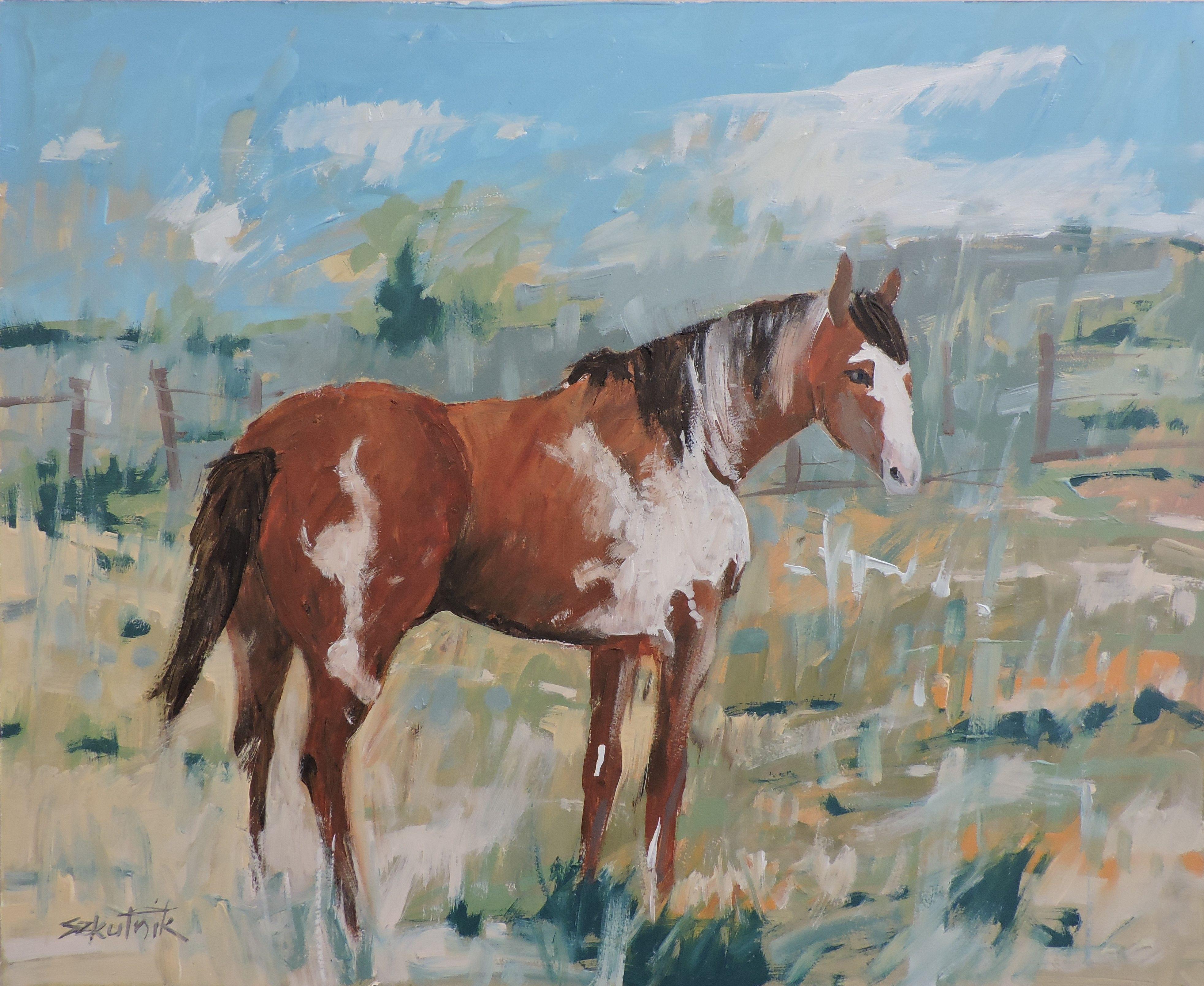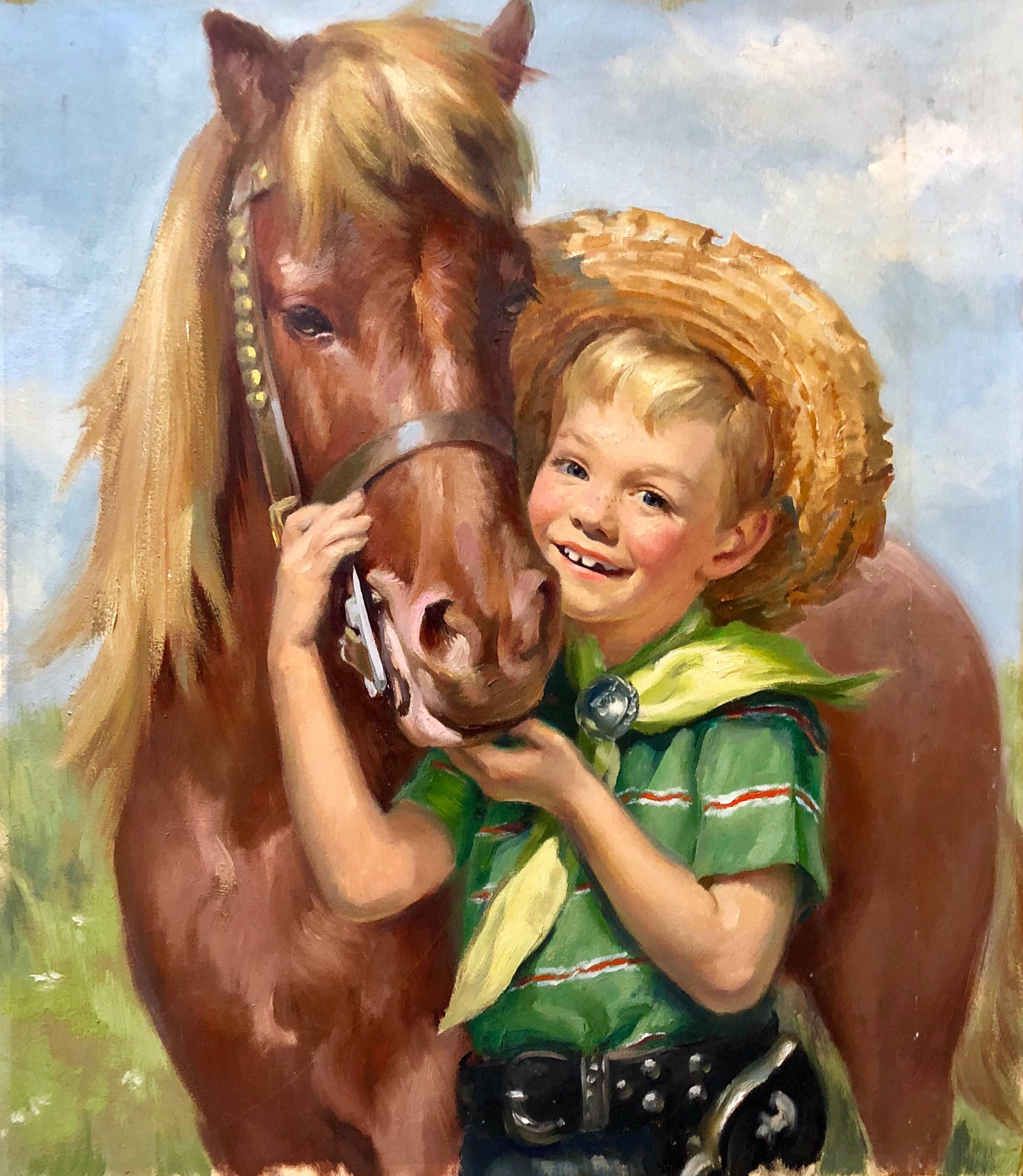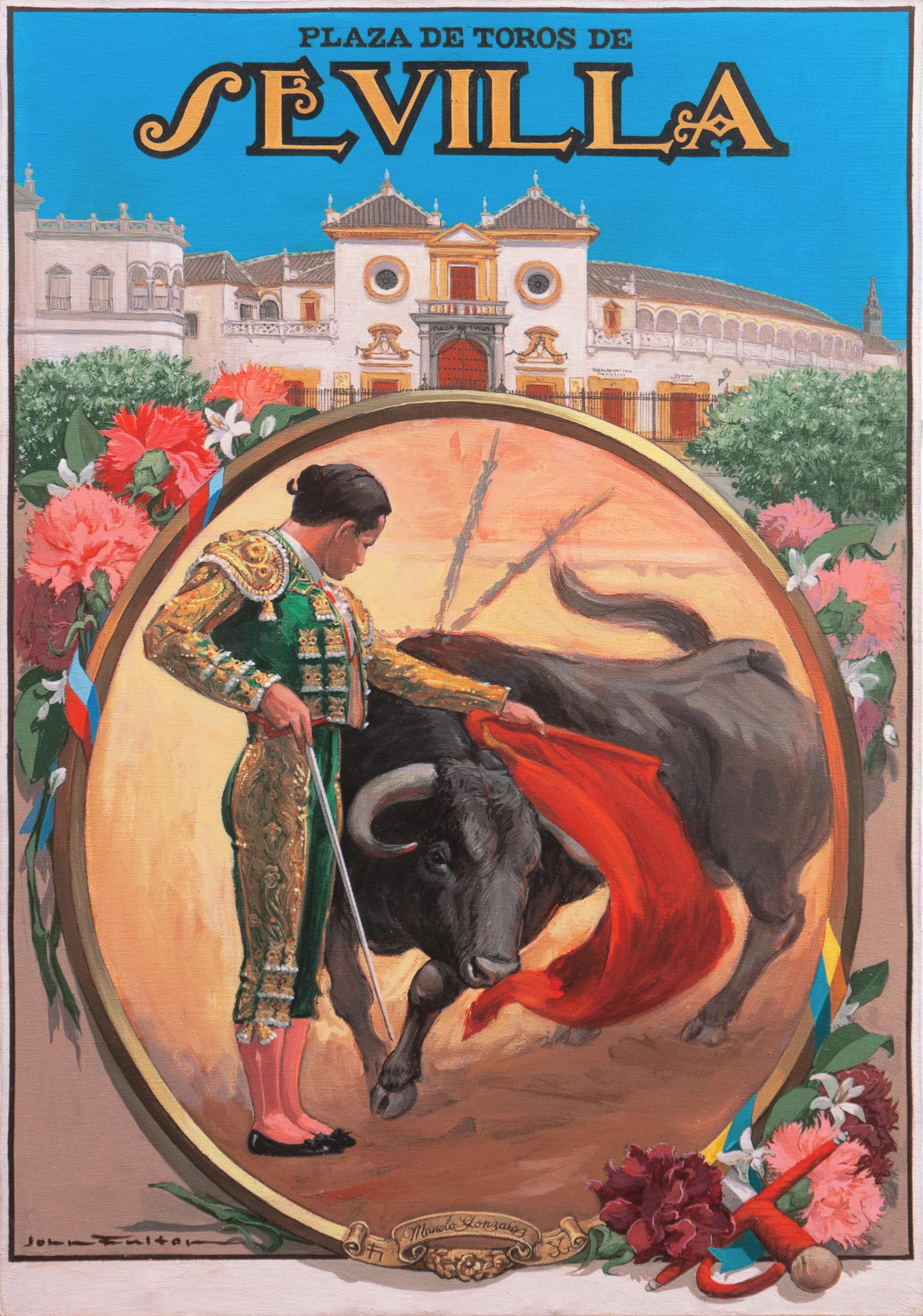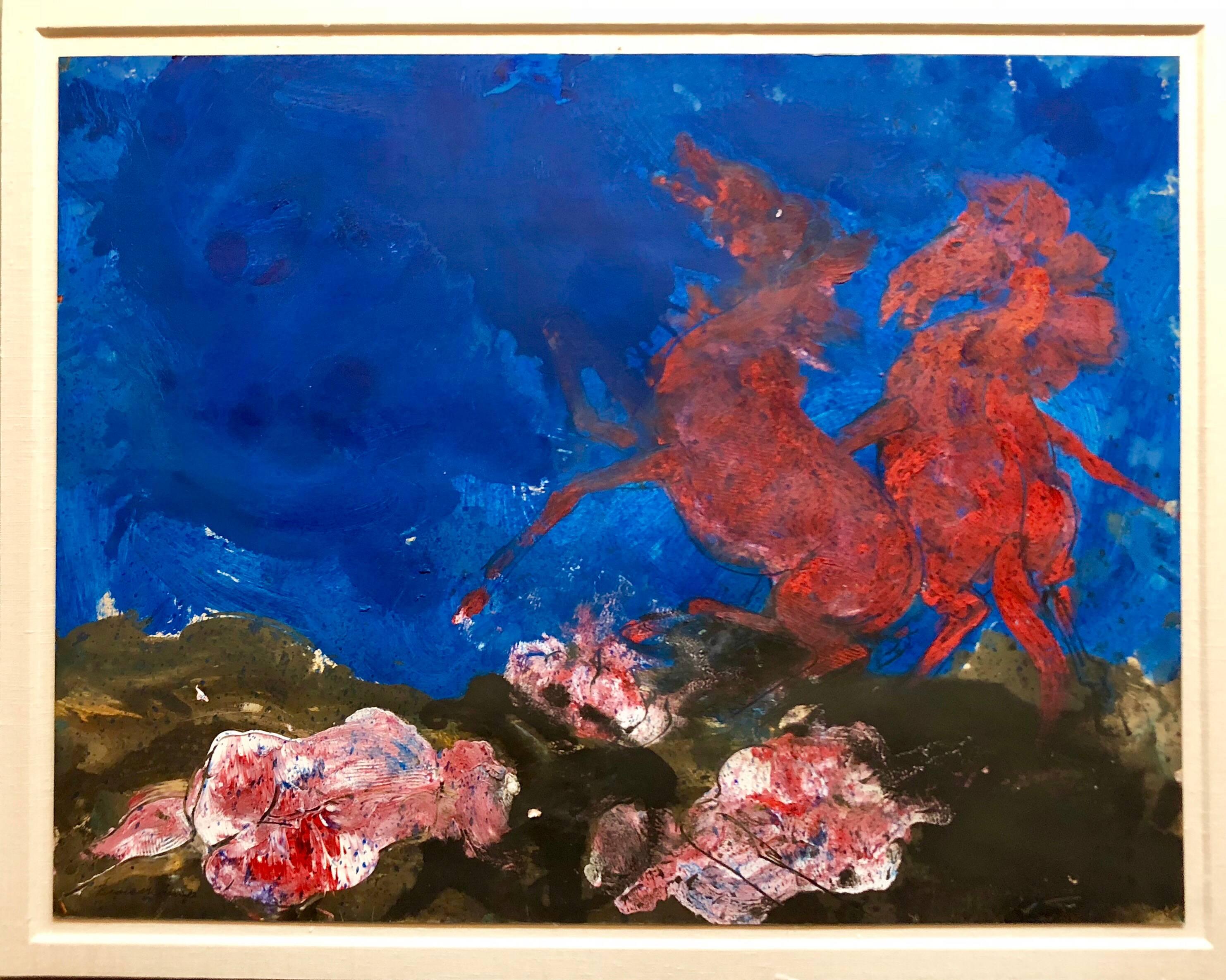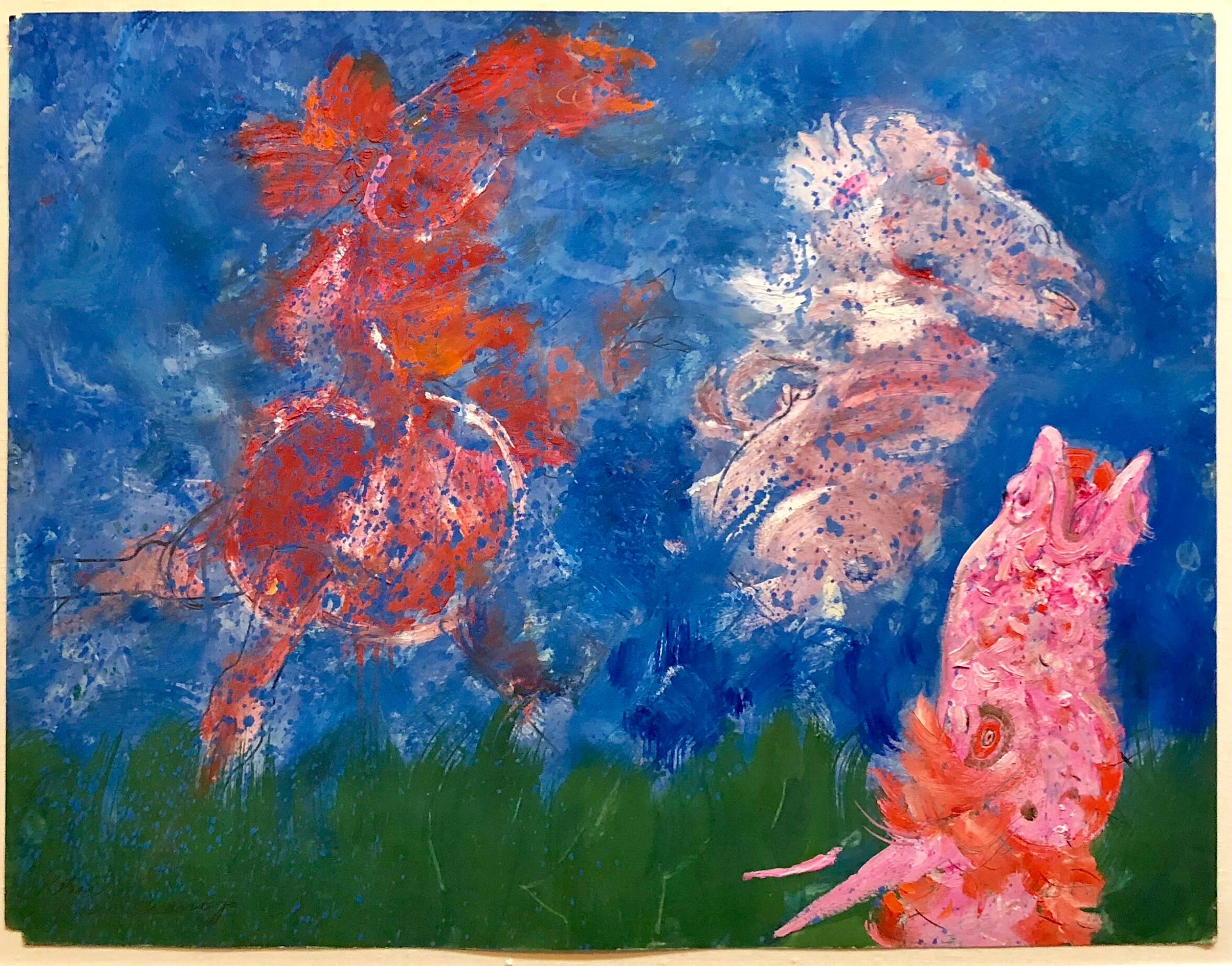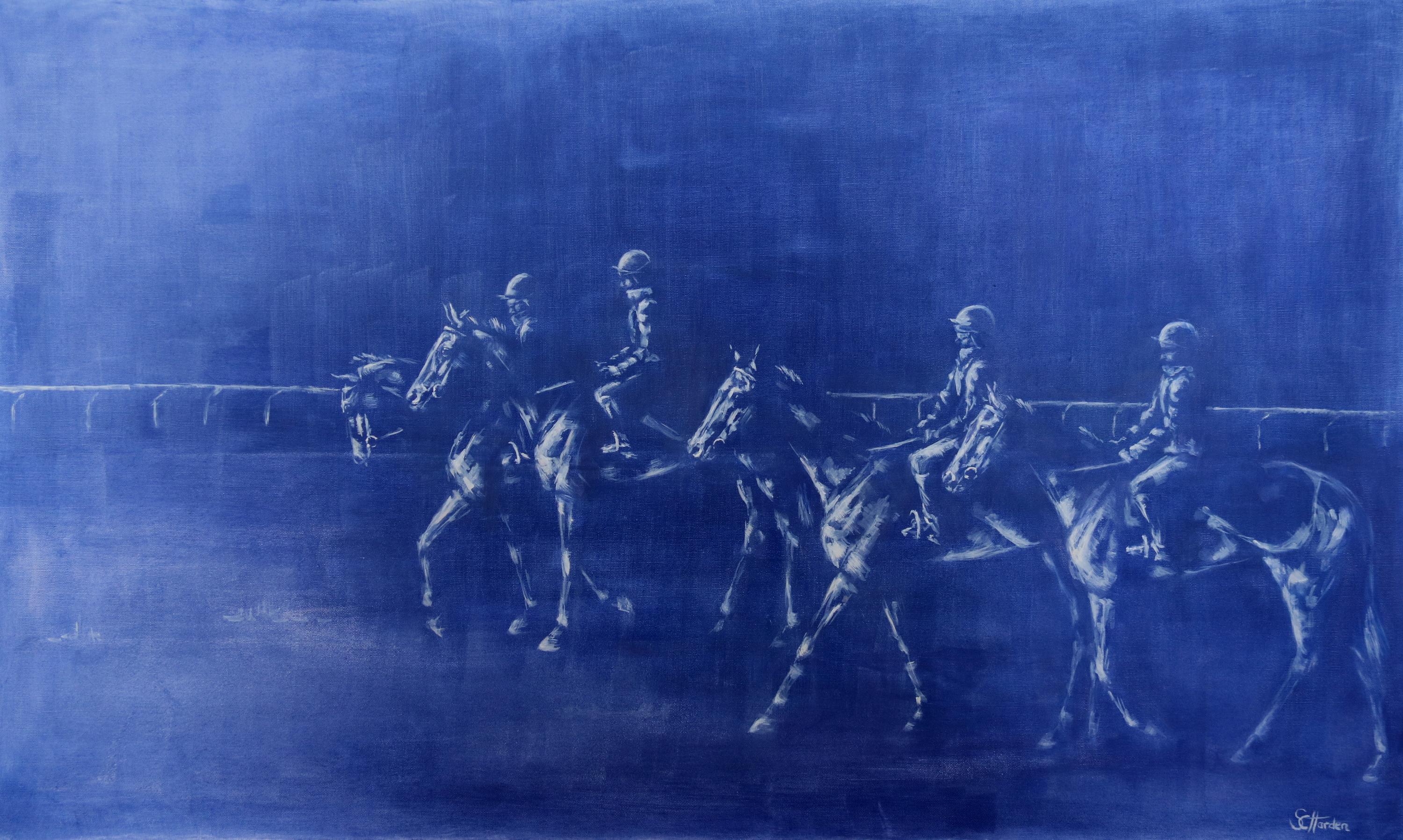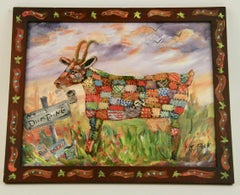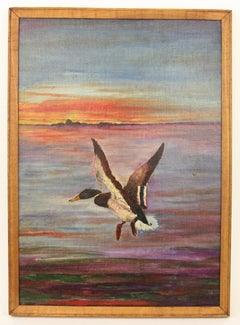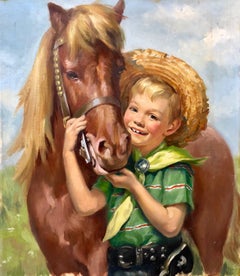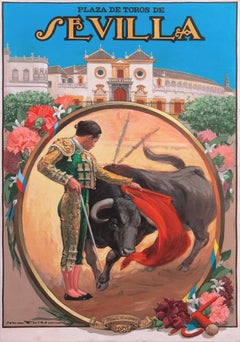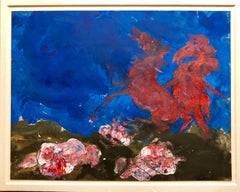Items Similar to American Impressionist Equestrian Oil Painting At The Races Finish Line
Want more images or videos?
Request additional images or videos from the seller
1 of 8
UnknownAmerican Impressionist Equestrian Oil Painting At The Races Finish Line1970
1970
About the Item
3794 Equestrian oil painting set in a custom wood frame
Image size 23.5x19.25"
About the Seller
4.9
Platinum Seller
Premium sellers with a 4.7+ rating and 24-hour response times
Established in 1970
1stDibs seller since 2003
525 sales on 1stDibs
Typical response time: 4 hours
- ShippingRetrieving quote...Shipping from: Douglas Manor, NY
- Return Policy
Authenticity Guarantee
In the unlikely event there’s an issue with an item’s authenticity, contact us within 1 year for a full refund. DetailsMoney-Back Guarantee
If your item is not as described, is damaged in transit, or does not arrive, contact us within 7 days for a full refund. Details24-Hour Cancellation
You have a 24-hour grace period in which to reconsider your purchase, with no questions asked.Vetted Professional Sellers
Our world-class sellers must adhere to strict standards for service and quality, maintaining the integrity of our listings.Price-Match Guarantee
If you find that a seller listed the same item for a lower price elsewhere, we’ll match it.Trusted Global Delivery
Our best-in-class carrier network provides specialized shipping options worldwide, including custom delivery.More From This Seller
View AllVintage Naive oil Painting of a Patchwork Goat " Natures Lawnmower "
Located in Douglas Manor, NY
Naive oil on board with painted wood frame
Image size 7.50 H x 9.5 W
Category
1970s Animal Paintings
Materials
Oil
Antique American School "Mallard in Flight Sporting Scene Oil by Erickson 1936
Located in Douglas Manor, NY
6013 Antique American school sporting scene of a mallard in flight oil painting.
Displayed in a wood frame, signed on verso Ericson 1936.
Category
1930s Animal Paintings
Materials
Oil
Vintage American Monochromatic "Circus Animals and Performers" Framed 1974
Located in Douglas Manor, NY
5023 Circus and performers in a black and white color scheme .
Set in a custom frame
Signed Williams 1974
Category
1970s Animal Paintings
Materials
Oil
Vintage Colorful Bird Abstract Oil Painting
Located in Douglas Manor, NY
5-3623 Oil on artist board set in a vintage frame
Image size 7x10"
Category
1980s Abstract Paintings
Materials
Oil
Blue Pegasus Equestrian Fantacy Painting
Located in Douglas Manor, NY
6024 Blue Pegasus equestrian painting on board
Framed
Image size 9.5x11.5"
Category
1960s Animal Paintings
Materials
Oil
American Impressionist Litter of Kittens animal Painting 1965
Located in Douglas Manor, NY
5-3745 Oil on canvas board of a litter of kittens frolicking on a sofa
Category
1960s Animal Paintings
Materials
Oil
You May Also Like
Horse Sketch #1, Painting, Oil on Wood Panel
By Richard Szkutnik
Located in Yardley, PA
original contemporary impressionism oil on panel horse painting :: Painting :: Impressionist :: This piece comes with an official certificate of authenticity signed by the artist :: ...
Category
2010s Impressionist Animal Paintings
Materials
Oil
Original Vintage Illustration Boy with Horse Oil Painting Americana
By Ariane Beigneux
Located in Surfside, FL
This painting, exemplifies the type of traditional portraits the artist Ariane Beigneux was specially known for. Here, Beigneux depicts the portrait of a little boy and horse in a realistic, and seemingly idealized manner. The artist uses local colors and controlled brushstrokes to render the subject, paying close attention to details adding a special clarity to the naturalism of the portrait.
it is painted on Whatman illustration board. some drawing in the margins.
Ariane Beigneux was born to French parents in Roxbury, CT in 1918 and passed in 2011. She studied art at the National Academy of Design with Gifford Beal, Sidney Dickinson and Ivan Olinsky and at the Art Students League in New York with Jon Corbino and Jean Liberte. Ariane painted professional artist childrens portraits for six decades. Her work was included in the book 6 Artists Paint a Portrait: Alfred Chadbourn...
Category
Mid-20th Century American Realist Figurative Paintings
Materials
Oil, Illustration Board
'Manolo Gonzalez' Plaza de Toros, Maestranza, Seville, Bullfighting, Matador
Located in Santa Cruz, CA
Signed lower left, 'John Fulton' (American, 1933-1998) and painted circa 1995.
The original oil painting for the poster advertising the appearance of Manolo Gonzalez at the prestigious Maestranza bullring in Seville and showing famous bullfighter in an emerald suit of lights, holding his espada at the ready while deflecting the enraged bull with his red cape.
John Fulton was an American bullfighter and painter who settled in Seville. Born in Philadelphia, he received a scholarship to an art school in San Miguel de Allende, Mexico, in the early 1950s. During this time, he studied both painting and bullfighting, killing his first calf there in 1953. In 1954, Fulton joined the U.S. Army and continued and continued painting and bullfighting on his downtime. After his release in 1956, he moved to Spain where he studied bullfighting under Juan Belmonte and performed as a novillero (novice) with some of Spain’s leading matadors. In July 1963, Fulton was sponsored by José María Montilla to take his 'alternativa' at the Plaza de toros...
Category
1990s Academic Portrait Paintings
Materials
Canvas, Oil
American Neo Expressionist "Wild Horses" Modernist Oil Painting
By Robert Beauchamp
Located in Surfside, FL
Robert Beauchamp (1923 – March 1995) was an American figurative painter and arts educator. Beauchamp's paintings and drawings are known for depicting dramatic creatures and figures with expressionistic colors. His work was described in the New York Times as being "both frightening and amusing,". He was a Guggenheim Fellow and a student of Hans Hofmann.
Robert Beauchamp was born in Denver, Colorado in 1923. He had three brothers and three sisters, and the children were orphaned by both parents by the time Beauchamp was three. The family grew up impoverished due to the Great Depression, living in a community house with other families. As a child he dabbled in art but it wasn't until high school that he began taking art classes. When not creating art he also played sports; football and basketball, and enjoyed chemistry and geology.
He was told he was good at drawing, and replaced study hall classes with art classes, receiving instruction and inspiration from a Welsh teacher named R. Idris Thomas. While in high school Beauchamp would go, every Monday, to the public library and a local museum where he would read books about art; specifically French painting, as assigned by Thomas. Beauchamp absorbed the tenets of European Modernism and American Abstract Expressionism—with which he eventually broke. While abstraction, with its focus on color and form, underlies his compositions, he filled canvas and paper with psychologically acute portraits of himself and others, nudes, animals, and objects of all kinds. Beauchamp would spend upwards of four hours a day in the art room and eventually won the Carter Memorial Prize, which provided a scholarship to the Colorado Springs Fine Arts Center. At Colorado Springs he studied under Boardman Robinson, painting landscapes in nature.
Beauchamp eventually joined the Navy and then returned to Colorado Springs to continue his studies. Traveling the world as an Armed Guard, he spent a year and a half at sea and the rest of the three years in San Francisco. Seeking to make money, and to follow his love for a girl, Beauchamp decided to attend Cranbrook Academy of Art from 1947–1948. There he studied pottery, believing one could "make more money selling pots than you could selling paintings." He described his experience at Cranbrook as intimidating and claustrophobic, and eventually switched to sculpture before switching to painting.
Beauchamp moved to New York City in the early 1950s and was involved in the Tenth Street galleries, which provided outlets for more experimental artists and the second generation of abstract expressionists. Despite his involvement with 10th Street and friendships with abstract artists, abstract art never interested in him. He showed at numerous galleries in New York and Provincetown, socializing with gallery owners, artists and collectors. His first exhibition was at the Tanager Gallery in New York, he also showed during the 1950s at the Hansa Gallery. In New York and Provincetown he studied under Hans Hofmann Eventually he felt that abstract expressionism became dull and stalemated.
During the 1960s he showed at the Green Gallery. C. 1960 he was awarded a Fulbright Award allowing him to travel to La Romola, Italy. He traveled frequently to cities such as Rome and worked constantly. Beauchamp returned to the states and lived in Provincetown at Walter Gutman's house, who awarded Beauchamp a grant. That year he met his future wife, Nadine Valenti, whom he married in 1967. Beauchamp taught at a variety of schools during his lifetime including Brooklyn College, School of Visual Arts, Cooper Union and the Art Students League of New York during the last fifteen years of his life.
Beauchamp described his drawings as painterly, seeking the spontaneity in an image. He would develop a drawing then a painting, and vice versa. His heavily impastoed paintings, often described as sculptures themselves, came from the pouring of paint from a can, with little planning and constant evolution in the medium upon the canvas. He preferred little planning to his creations, believing that an artists work would become stale and repetitive with constant planning.
He also created large scale works, at times 70 inches long. Beauchamp had little intention of ever selling his large works, preferring to create them due to the slow and intense experience he received from the process. The large drawings he created on the floor, and the smaller works were created on a table. Paintings were created on either the floor or wall and he described his painting process as "splattering", "pushing the paint around," and sponging.
Animals often appear in his paintings, despite a dislike for domestic animals outside of his artistic creations. He called the characters in his paintings as Beauchamps. Some Beauchamps hold meaning, with Beauchamp rarely sharing the meaning behind the symbols and characters. He made up the creatures himself, seeking to emphasize the character of each.
In 2006 the University of Massachusetts Amherst College of Visual & Performing Arts hosted an exhibition of Beauchamp's pieces from the 1960s, curators stated that Beauchamp's work: "effortlessly blends innovative style elements with narrative, descriptive images. One senses equal enjoyment in the manipulation of, and interaction with, color and paint, and the often sudden and unexpected presence of a wasp or a lump of sugar."
included in the important exhibit "Twelve New York Painters." New York: David Findlay Jr. Fine Art with Mary Abbott, Alcopley, Robert Beauchamp, Byron Browne, Charles Cajori, Jim Forsberg, Carl Heidenreich, Angelo Ippolito, Emily Mason, Robert Natkin, Robert Richenburg and Nina Tryggvadottir...
Category
20th Century Neo-Expressionist Abstract Paintings
Materials
Paper, Oil
American Neo Expressionist "Wild Horses" Modernist Oil Painting
By Robert Beauchamp
Located in Surfside, FL
Signed lower left.
Robert Beauchamp (1923 – March 1995) was an American figurative painter and arts educator. Beauchamp's paintings and drawings are known for depicting dramatic creatures and figures with expressionistic colors. His work was described in the New York Times as being "both frightening and amusing,". He was a Guggenheim Fellow and a student of Hans Hofmann.
Robert Beauchamp was born in Denver, Colorado in 1923. He had three brothers and three sisters, and the children were orphaned by both parents by the time Beauchamp was three. The family grew up impoverished due to the Great Depression, living in a community house with other families. As a child he dabbled in art but it wasn't until high school that he began taking art classes. When not creating art he also played sports; football and basketball, and enjoyed chemistry and geology.
He was told he was good at drawing, and replaced study hall classes with art classes, receiving instruction and inspiration from a Welsh teacher named R. Idris Thomas. While in high school Beauchamp would go, every Monday, to the public library and a local museum where he would read books about art; specifically French painting, as assigned by Thomas. Beauchamp absorbed the tenets of European Modernism and American Abstract Expressionism—with which he eventually broke. While abstraction, with its focus on color and form, underlies his compositions, he filled canvas and paper with psychologically acute portraits of himself and others, nudes, animals, and objects of all kinds. Beauchamp would spend upwards of four hours a day in the art room and eventually won the Carter Memorial Prize, which provided a scholarship to the Colorado Springs Fine Arts Center. At Colorado Springs he studied under Boardman Robinson, painting landscapes in nature.
Beauchamp eventually joined the Navy and then returned to Colorado Springs to continue his studies. Traveling the world as an Armed Guard, he spent a year and a half at sea and the rest of the three years in San Francisco. Seeking to make money, and to follow his love for a girl, Beauchamp decided to attend Cranbrook Academy of Art from 1947–1948. There he studied pottery, believing one could "make more money selling pots than you could selling paintings." He described his experience at Cranbrook as intimidating and claustrophobic, and eventually switched to sculpture before switching to painting.
Beauchamp moved to New York City in the early 1950s and was involved in the Tenth Street galleries, which provided outlets for more experimental artists and the second generation of abstract expressionists. Despite his involvement with 10th Street and friendships with abstract artists, abstract art never interested in him. He showed at numerous galleries in New York and Provincetown, socializing with gallery owners, artists and collectors. His first exhibition was at the Tanager Gallery in New York, he also showed during the 1950s at the Hansa Gallery. In New York and Provincetown he studied under Hans Hofmann Eventually he felt that abstract expressionism became dull and stalemated.
During the 1960s he showed at the Green Gallery. C. 1960 he was awarded a Fulbright Award allowing him to travel to La Romola, Italy. He traveled frequently to cities such as Rome and worked constantly. Beauchamp returned to the states and lived in Provincetown at Walter Gutman's house, who awarded Beauchamp a grant. That year he met his future wife, Nadine Valenti, whom he married in 1967. Beauchamp taught at a variety of schools during his lifetime including Brooklyn College, School of Visual Arts, Cooper Union and the Art Students League of New York during the last fifteen years of his life.
Beauchamp described his drawings as painterly, seeking the spontaneity in an image. He would develop a drawing then a painting, and vice versa. His heavily impastoed paintings, often described as sculptures themselves, came from the pouring of paint from a can, with little planning and constant evolution in the medium upon the canvas. He preferred little planning to his creations, believing that an artists work would become stale and repetitive with constant planning.
He also created large scale works, at times 70 inches long. Beauchamp had little intention of ever selling his large works, preferring to create them due to the slow and intense experience he received from the process. The large drawings he created on the floor, and the smaller works were created on a table. Paintings were created on either the floor or wall and he described his painting process as "splattering", "pushing the paint around," and sponging.
Animals often appear in his paintings, despite a dislike for domestic animals outside of his artistic creations. He called the characters in his paintings as Beauchamps. Some Beauchamps hold meaning, with Beauchamp rarely sharing the meaning behind the symbols and characters. He made up the creatures himself, seeking to emphasize the character of each.
In 2006 the University of Massachusetts Amherst College of Visual & Performing Arts hosted an exhibition of Beauchamp's pieces from the 1960s, curators stated that Beauchamp's work: "effortlessly blends innovative style elements with narrative, descriptive images. One senses equal enjoyment in the manipulation of, and interaction with, color and paint, and the often sudden and unexpected presence of a wasp or a lump of sugar."
included in the important exhibit "Twelve New York Painters." New York: David Findlay Jr. Fine Art with Mary Abbott, Alcopley, Robert Beauchamp, Byron Browne, Charles Cajori, Jim Forsberg, Carl Heidenreich, Angelo Ippolito, Emily Mason, Robert Natkin, Robert Richenburg and Nina Tryggvadottir...
Category
20th Century Neo-Expressionist Abstract Paintings
Materials
Paper, Oil
First Lot on Newmarket Heath
By Sophie Harden
Located in Deddington, GB
Four horses heading out to do their first mornings work from the yard in Newmarket. All quietly walking towards the bottom of the gallop as the sun is rising. A huge statement piece ...
Category
2010s Abstract Abstract Paintings
Materials
Oil
Recently Viewed
View AllMore Ways To Browse
The Finish Line
Vintage Finish Paint
Oil Of Hunting Dogs
Horse Oil 18th
Hunt Scene Prints
English Oil Paintings Dogs
Henry Geldzahler
Original Oil Rabbit
Paintings Of Ravens
Racehorses Painting
Arabian Horse
Indian Cow
Miro Style Canvas In Oil
Thoroughbred Paintings
White Rabbit Sculpture
Hawaiian Wood Sculpture
Single Rabbit
Whale Artwork
